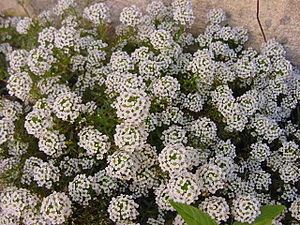[amazon_link asins=’B01J248U5G,B002FYX5H4,B005DT9JC8,B01GGUEEK4′ template=’ProductCarousel’ store=’finmeacur-20′ marketplace=’US’ link_id=’830c2cde-4ac7-11e7-8da5-ebf7de06eb77′]
Botanical Name :Teucrium marum
Family: Lamiaceae
Genus: Teucrium
Species: T. marum
Kingdom: Plantae
Order: Lamiales
Habitat:Cat thyme, a native of Spain and the Western Mediterranean, will live through the winter in the open, on a dry soil and in a good situation, when the frosts are not severe, though it is frequently killed in hard winters if unprotected by mats or other covering.It grows in dry hills and bushy places.
Description:
Teucrium marum is an evergreen Shrub growing to 0.3 m (1ft) by 0.3 m (1ft in). It has oval leaves, broader at the base, downy beneath, with uncut margins. It is not frost tender. It is in leaf all year. It is in flower from Jul to September, and the seeds ripen from Aug to September. The flowers are hermaphrodite (have both male and female organs) and are pollinated by Bees. The plant is self-fertile.
CLICK & SEE THE PICTURES…..
The flowers, are in one-sided spikes, the corollas are crimson in color.
The leaves and younger branches when fresh, on being rubbed emit a volatile, pungent, aromatic smell, which excites sneezing, but in taste they are somewhat bitter, accompanied with a sensation of heat.
Some, but not all cats prefer it to catnip and will corkscrew themselves into the plant in ecstasy.
Older plants can shrub 3 or 4 feet high if grown in a mild climate…..click & see
Cultivation :
Succeeds in any moderately good soil, preferring a dry soil and a sunny position. Does well in dry places in the rock garden[1]. Plants are not fully hardy in Britain, they can be killed in severe winters especially if the weather is wet. The bruised leaves release a pungent aroma. Cats are strongly attracted to this plant and may tear it to pieces. Plants in this genus are notably resistant to honey fungus.
Propagation:
Seed – sow spring in a cold frame and only just cover the seed. Prick out the seedlings into individual pots when they are large enough to handle and plant them out in the summer if they are large enough. Otherwise, grow them on in a cold frame for the winter and plant them out in the following spring. Division in early spring. Larger divisions can be planted out direct into their permanent positions. We have found that it is best to pot up smaller divisions and grow them on in light shade in a greenhouse or cold frame until they are growing away well. Plant them out in the summer or the following spring. Cuttings of half-ripe wood, July/August in a frame.
Medicinal Uses:
The whole herb is aromatic, deobstruent, diuretic, nervine, stimulant, stomachic and tonic. The plant is supposed to possess very active powers and has been recommended in the treatment of many diseases, being considered useful in most nervous complaints. It is used in the treatment of gallbladder and stomach problems. The root bark is considerably astringent and has been used for checking haemorrhages. A homeopathic remedy is made from the whole herb. It is said to be effectual against small thread-worms in children.
The leaves in powdered form given in wine. The powdered leaves, either alone, or mixed with other ingredients of a like nature, when taken as snuff, have been recommended as excellent for ‘disorders of the head,’ under the name of compound powder of Assarabacca, but lavender flowers are now generally substituted for Cat Thyme. The root bark is considerably astringent and has been used for checking hemorrhages.
Other Uses:
This herb is nirvana to cats. Its potent fragrance makes cats loll about in ecstasy. Forget about weak yet better known cat mint (Nepeta spp.). But despite its value as a cat pleaser, and its charming beauty, it is very little known.
Disclaimer:
The information presented herein is intended for educational purposes only. Individual results may vary, and before using any supplements, it is always advisable to consult with your own health care provider.
Resources:
http://en.wikipedia.org/wiki/Teucrium_marum
http://species.wikimedia.org/wiki/Teucrium_marum
http://www.herbnet.com/Herb%20Uses_C.htm
http://www.arthurleej.com/p-o-m-July04.html
http://www.pfaf.org/user/Plant.aspx?LatinName=Teucrium+marum
Related articles
- Ajuga decumbens (findmeacure.com)
- Leatherleaf (Chamaedaphne calyculata) (findmeacure.com)
- Carrion Flower (findmeacure.com)
- Vinegar weed (findmeacure.com)
- 5 things to know about catnip (cnn.com)
- Garden Plants that Repel Fleas & Ticks article by Dana Lacroix (livingforpets.com)
- Ground covers serve multiple purposes in garden (sfgate.com)
- Thyme in my hands (ricarantsandraves.wordpress.com)
- Medal of Honor Cat (milkandcookies.com)
- Growing Something Your Cat Will Love (offtheleashsd.wordpress.com)













![Reblog this post [with Zemanta]](https://i0.wp.com/img.zemanta.com/reblog_e.png?w=580)